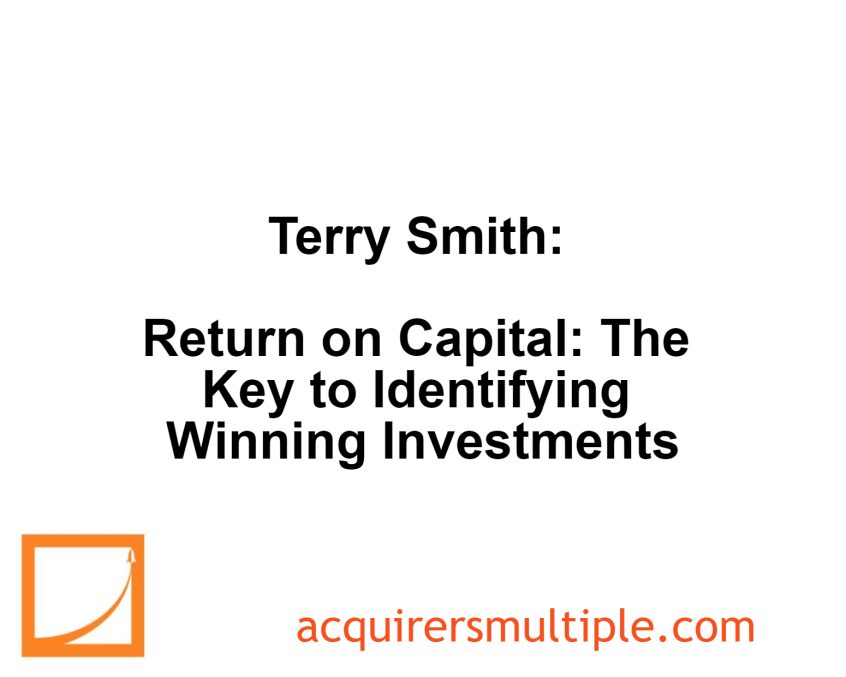In his book Investing for Growth, Terry Smith provides investors with a summary of what a good company looks like. A good company is one that consistently generates high returns on capital (significantly above its cost of capital) across different economic conditions.
His key points are:
- Return on capital above cost of capital creates value for shareholders. This is analogous to earning more on an investment than the cost of borrowing the money.
- Some industries, like airlines, struggle to make adequate returns. Investors may still invest in them hoping for future improvement, but this erodes value in the meantime.
- Investing in good companies with high returns on capital leads to long-term value growth for shareholders.
Here’s an excerpt from the book:
A good company is one which creates value for its shareholders by making a high return on capital – significantly above its cost of capital – across the business and economic cycle.
What is return on capital? It is usually measured by the operating profit of the business, divided by the capital employed, expressed as a percentage.
What is the cost of capital? The cost of debt is relatively easy – you can find a reference to the cost of bonds in the accounts and if there is bank debt you can just use the interest charge divided by the average of opening and closing debt as the percentage cost.
Cost of equity is trickier to ascertain and is usually taken as a so-called risk-free rate, such as the yield on government bonds in the same currency that the company operates in, plus a risk premium to compensate for the additional risks inherent in equity investment. This slightly complex formula probably explains at least in part why so few investors seem to try to work this out.
Why is this important? Companies are just like us in some respects. If you borrowed money at 10% per annum and invested it at a 20% per annum return, you would become richer. But if you invested at 5% per annum, you would become poorer. Similarly, a company which makes a return above its cost of capital becomes more valuable – it creates value for its shareholders – and vice versa.
But don’t all companies create value for their shareholders? Sadly not.
There are some industries which are prone to make returns below their cost of capital much or all of the time, such as the airline industry which has probably not created value for shareholders throughout most of its existence.
But surely if a whole industry just keeps destroying value, why would anyone invest in it? Fund managers invest in companies which do not make adequate returns and so destroy value because they hope they will change – that a change of management, an upturn in the business cycle, a takeover or industry consolidation will alter this fundamentally poor characteristic.
Whilst fund managers wait for their investments in bad companies to come good, they steadily erode value by the equivalent of borrowing money from you the shareholder and investing it at an inadequate rate of return.
When you own shares in a good company, you can be sure that its value will rise over time.
You can find a copy of the book here:
Terry Smith – Investing For Growth
For all the latest news and podcasts, join our free newsletter here.
Don’t forget to check out our FREE Large Cap 1000 – Stock Screener, here at The Acquirer’s Multiple:



